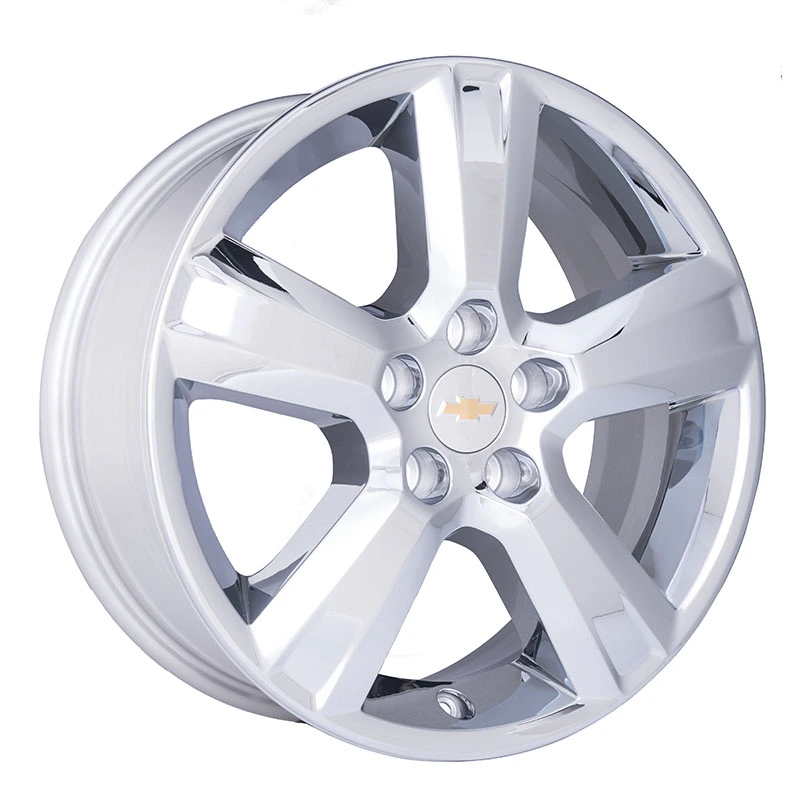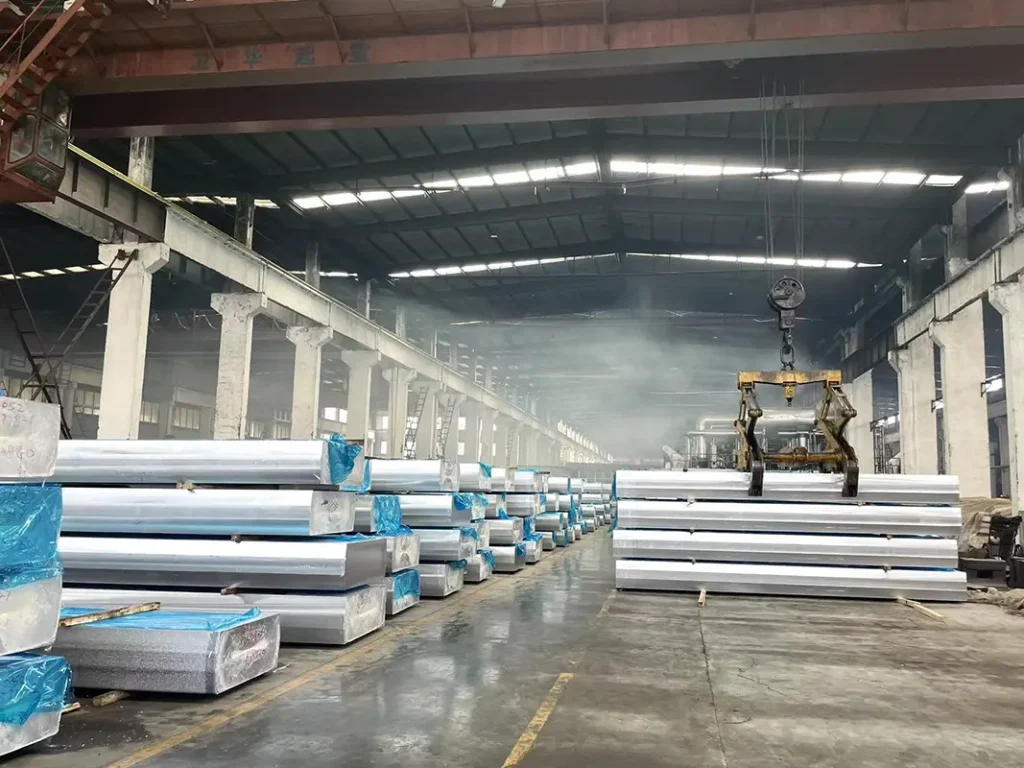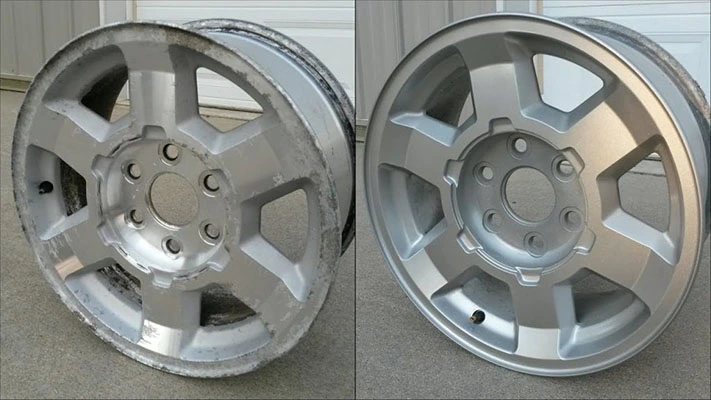
Aluminum wheels are vehicle hubs made of aluminum alloy materials. Common aluminum alloys include aluminum magnesium alloy (like 5052 aluminium, 5083 aluminum, 5754 aluminum, etc), aluminum silicon alloy (4000 series), etc. Aluminum wheels are commonly used in passenger vehicles such as private cars, sports cars, SUVs and light trucks. The advantage of its wide range of uses is its lightweight characteristics, which can reduce the overall weight of the vehicle, increase fuel efficiency, and improve the performance of the suspension system. In addition, aluminum wheels also have good heat dissipation properties and high corrosion resistance.
Aluminum Wheel Manufacturing And Production:
Aluminum 6061-t6 is usually chosen as the raw material for manufacturing aluminum wheels. This alloy has high strength and hardness and can remain stable under a variety of environmental conditions. Casting or forging is generally used to manufacture wheel hubs. Casting involves injecting molten 6061 aluminum alloy into the wheel hub mold and cooling and solidifying it to form the initial wheel hub shape. Forging involves heating aluminum 6061 alloy and shaping it into the desired wheel shape under controlled pressure.

After the initial hub shape is formed, it is refined and processed through turning, milling, drilling, cutting and other processes to achieve the final size and shape requirements.
In some cases, aluminum wheels are heat treated to increase their strength and durability. Common heat treatment methods include solution treatment and aging treatment. Solid solution treatment is to heat the wheel hub to a certain temperature to uniformly distribute the solute in the solid solution, and then quickly cool it. Aging treatment is to precipitate the solutes in the alloy by maintaining it at the appropriate temperature for a period of time.
The next step is surface treatment, which often uses surface treatment technologies such as anodizing, electroplating, and spraying to increase the weather resistance of the wheel hub. The last step is quality inspection and assembly to ensure that the wheel hub meets the design requirements and relevant standards.
Learn About Aluminum Wheel Damage:
Automotive aluminum wheels can sustain a variety of damage and wear. Minor scrapes and scratches, for example, may develop while driving when the wheels come into contact with the road surface and objects. Excessive hits or crashes on poor road conditions will cause the aluminum wheels to bend and render the wheel hub surface uneven. Although aluminum die casting alloys have some corrosion resistance, they are nonetheless susceptible to oxidation and corrosion when exposed to harsh weather and chemicals for an extended period of time (such as salt water and chemical snow melting agents on the road). Aluminum wheels may crack or even break under extreme impact or long-term load situations. These issues will have an impact on the wheel’s look and structural integrity.

How to Polish and Repair Aluminium Wheels?
Step 1: Check the rim condition.
Repair scope: Aluminum alloy wheels and rims with original coating materials
Suitable for wheels of various sizes and shapes.
Step 2: Remove the tire.
1. Remove the tire first.
2. Release the tire pressure.
3. Squeeze the tire into a flat state and directly use the tire dialing machine to remove the rim (this can avoid water penetrating into the tire during construction).
Step 3: There is no chip on the rim, but there are scratches, yellowing, and cracks on the surface.
1. Use different types of sandpaper for polishing according to different degrees of damage.
2. Use wheel repair ash to fill in the scratched areas and repair them.
3. Bake dry with special equipment.
4. Use 180#-320# sandpaper to polish one by one.
5. Use 600# or 800# dry sanding paper to polish the surface of the entire steel ring to a matte finish.
6. Spray the special primer for the wheel hub on the scratch filling area.
7. Put it into the equipment and bake it at 100-120 degrees for 60 minutes.
8. Polish again to matte finish.

Step 4: Edge sealing.
1. Cover the wheel rim with universal masking film.
2. Wipe the surface of the rim with degreaser.
3. Use equipment to dry.
4. Wipe surface dust with dust removal cloth.
Step 5: Spray primer and color paint.
1. Spray the primer evenly on the entire or damaged area. After drying, continue to search for trachoma. All trachoma must be filled with repair ash (note: avoid using “eye-filling red ash”).
2. Spray the prepared color paint evenly on the wheel rim.
Step 6: Spray special repair materials.
1. Prepare special materials for wheel hub repair.
2. Pour the prepared materials into the special repair spray gun.
3. Adjust the spray gun atomization.
4. Spray evenly on the rim surface at one time, usually two coats.
5. Put it in the oven and control the temperature to 100 degrees for 60 minutes.
Step 7: Check the rims.
1. Check whether there are a small amount of dust particles on the surface of the rim.
2. If there is any, you can use 2000# water-sanded sandpaper to lightly polish it.
3. Use a high-speed polishing machine to pour a small amount of microcrystalline polishing glaze for polishing.
4. Wipe the rim with a clean towel and check whether the rim is bright.
Step 8: Installation.
1. Install tires.
2. Fill with air pressure and perform dynamic balancing before installation.
How To Keep Aluminium Wheels In Good Condition?

- Regular Cleaning: Use a mild car wash and a soft-bristled brush to clean the surface of the wheel hub. Do not use sharp or hard objects to scratch to avoid scratching the surface. After cleaning, rinse thoroughly with water and dry with a soft, clean cloth.
- Prevent Corrosion: Before installing the aluminium wheel hub, it is recommended to apply a layer of transparent protective agent, such as wax or special wheel hub sealant, on the surface of the wheel hub to form a protective layer against external stimuli. In addition, avoid contact with corrosive substances such as strong acids and alkalis to prevent the wheel hub surface from being corroded.
- Avoid Severe Impacts: Avoid hitting hard objects or passing through sections with poor suspension while driving. When replacing tires, avoid using excessive force or operating in an incorrect manner to avoid damaging the surface of the wheel hub.
- Regular Maintenance: Check for loose wheel hub screws and scratches, pitting, or other damage on the wheel hub’s surface on a regular basis.
- Seasonal Storage: If you do not intend to use the vehicle for an extended period of time, it is recommended that the aluminum wheels be removed from the vehicle and stored in a dry, clean indoor environment. Before storing, properly clean the wheels and apply a layer of protectant to prevent oxidation and damage.


